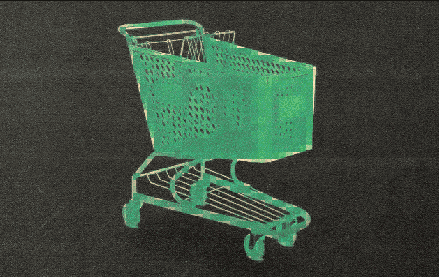Join us Dec. 1-3 in New Orleans for the Digiday Programmatic Marketing Summit
Two schoolgirls, dressed in hijabs, engage in casual banter in Farsi while packing up their books after class. As they leave the classroom, one of them confidently begins rapping, in English, along with “Alphabet Aerobics” by Blackalicious as she strides down the school corridor.
The YouTube Music ad, part of a campaign to show the diversity of music lovers, launched on July 18, the opening day of a Republican National Convention that would ultimately coronate Donald Trump as the party leader.
“We knew it was a bold statement, but it was also a very important one for us to make,” says Danielle Tiedt, chief marketing officer at YouTube. “It was what our users expected from us, and it was also the perfect time to represent diversity and to stand up for our core values.”
YouTube is far from alone. In the months since, a wide array of major American brands — including Microsoft, Chevrolet, CoverGirl and Hyatt — have prominently featured Muslim men, women and children in their marketing. And they have done so on some of the biggest stages available.
This year’s Super Bowl, for example, was perhaps the most political ever, with brands like Airbnb and Coca-Cola — which brought back its “It’s Beautiful” ad from 2014 — preaching inclusion. Airbnb’s “We Accept” ad pledge of $4 million to support refugees, a direct rebuke of against President Trump’s immigration executive order. The Oscars were no different, with Hyatt debuting its new ad campaign, “For a World of Understanding,” in which one of the scenes shows a woman wearing a hijab alerting her fellow train passenger to her fallen scarf.
The brands stop short of saying their ads are deliberately political, choosing to highlight the principles of diversity and inclusion instead. Nonetheless, these are consciously strong statements to make — especially in light of the highly polarized political climate today.
“They absolutely intended to speak to the current climate and discussion around the president’s position,” says Chris Allieri, principal of Mulberry & Astor, a public relations and public affairs consultancy. “But it’s neither subversive nor progressive to stand for diversity — it’s just the right thing to do.”
It’s also what the audience wants. According to a recent report by by The Innovation Group at JWT Intelligence, the trend-forecasting arm of J. Walter Thompson, today’s consumers are more politicized than ever. And with public awareness of corporate political stances at an all-time high, brands stand to gain a great deal from effectively engaging with political issues. According to the report, 39 percent of millennials say that brands should play a larger role in politics, and 51 percent say that they appreciate brands taking a political stance in their advertising.
“Culturally savvy brands in tune with their audiences picked up on this earlier, but now consumers are actually demanding it,” says Jamie Gutfreund, chief marketing officer at Wunderman. “People are evaluating what brands stand for on a lot of different levels, and they are being held more accountable than ever.”
It also makes business sense, with the Muslim consumer segment representing a huge growth opportunity. The global Muslim lifestyle market is estimated to grow to $2.6 trillion dollars with an additional $26 trillion for Islamic finance, according to Shelina Janmohamed, vp of Muslim-focused brand agency Ogilvy Noor. And according to the Pew Research Center, the Muslim population in the U.S. will double by 2050, from 322 million people in 2015.
That’s not to say that there aren’t downsides. For one, ads celebrating racial diversity are often targets of a huge amount of vitriol online: A recent Honey Maid ad from its “This is Wholesome” campaign took on Islamophobia and was met a deluge of nasty comments on its social media platforms. But the benefits seem to far outweigh the costs, for most of these brands.
“From CPG to retail to financial services, targeting this audience is in the interest of engagement and growth,” says Anne Bologna, chief strategy officer at iCrossing. “If you’re a brand with a national footprint, you cannot win without being multicultural and catering to this audience.”
More in Marketing

Walmart, Target, Kroger swap name brands for private labels in Thanksgiving meal deals
Walmart’s website says its meal costs 25% less than the basket it offered last year, and that the turkey was at the lowest price since 2019.

Amid search wars, Google touts YouTube, display inventory to advertisers
Google is pushing Demand Gen and YouTube to ad partners, hedging against the inevitable erosion of its search business by AI chatbots.

Future of Marketing Briefing: The agentic turn inside programmatic advertising
The arrival of the Agentic RTB Framework this week lands as this week lands as the third agentic standard in under a month.








